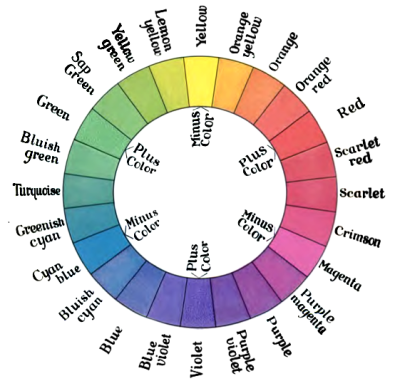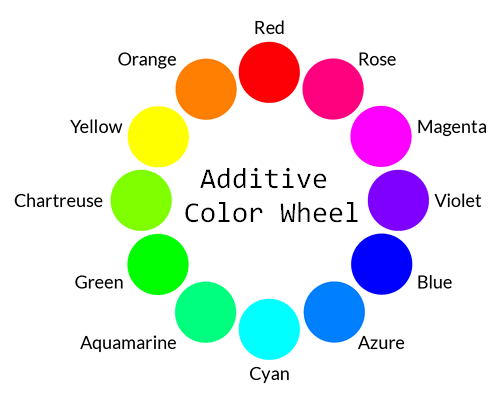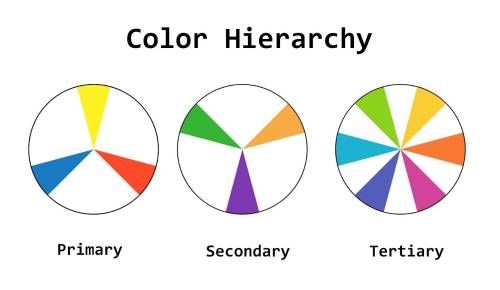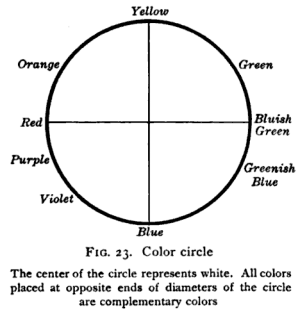About
After Newton had used a prism to separate daylight and count seven individual colors (hue), it appeared to him that this was a closed system. By taking the violet end of the spectrum and linking it to the red start-point, he thus created a convincing circle of colors.
A color wheel or color circle is an abstract illustrative organization of color hues around a circle that shows relationships between colors from:
- a primary point of view
- or opponent / complementary point of view
Type
Primary Colors
Most color wheels are based on:
- three primary colors,
- three secondary colors,
- and the six intermediates formed by mixing a primary with a secondary, known as tertiary colors,
For a total of 12 main divisions; some add more intermediates, for 24 named colors.
Additive
In a additive model (Plus colors)
- the additive primary color are arranged at three equally spaced points around their color wheel.
- the center is white or gray, indicating a mixture of different wavelengths of light (all wavelengths, or two complementary colors, for example).
- Intermediate and interior points of color wheels and circles represent color mixtures.
The 12 main colors are:
Subtractive
In a paint or subtractive color wheel (Minus Color)
- the subtractive primary color are arranged at three equally spaced points around their color wheel.
- the center is usually black, representing all colors of light being absorbed
- Intermediate and interior points of color wheels and circles represent color mixtures.
Example of a red, yellow, blue
for a CMYK color wheel:
Hierarchy
The color wheel shows a hierarchy of colors where:
- the primary colors are located at 120 degrees of each other (the first been at 0 degree normally)
- the secondary colors are located in between
- and so on…
Opponent / Complementary colors
Other color wheels, however, are based on the four opponent colors, and may have four or eight main colors.



